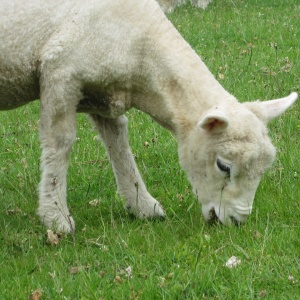
A new method for monitoring nutrient concentrations in pasture in real time - using a small near-infrared spectroscopy device - could allow farmers to improve productivity by adjusting livestock grazing patterns, according to this paper.
This new device reduces analysis time from about 16 hours using previous methods to under one minute using this method, which the authors say could encourage farmers to monitor pasture nutrient concentration frequently. The paper reports that when pasture has been grazed to less than 7 cm in height, the concentration of protein in the plants - measured using the new spectroscopy device - drops significantly.
Abstract
Changes in pasture nutrients over the growing season are typically not monitored but doing so may help farmers improve how effectively they utilize forage. The aim of this research was to assess the use of real-time near-infrared spectroscopy (NIRS) for monitoring seasonal changes in nutrient concentrations of different pasture types used for grazing and silage production. Three permanent pastures and three temporary ley pastures (3 years old) grazed by cattle or sheep and/or used for silage production were monitored weekly for 20 weeks from April to August 2017 in the UK. Five pasture samples per field were obtained per week for NIRS analysis and estimation of fresh and dry matter herbage cover (both kg per hectare). Herbage height was also measured each week. Permanent pastures included a diverse range of native UK grass species, and temporary ley pastures were predominantly perennial ryegrass (Lolium perenne) with either white (Trifolium repens) or red clover (Trifolium pretense). Effects of pasture type (permanent or temporary), phase of production (grazed or rested for regrowth) and month of year (April to August) on pasture nutrients [dry matter, crude protein, acid detergent fiber (ADF), neutral detergent fiber (NDF), water soluble carbohydrate (WSC), ash, digestible organic matter (DOMD), and dry matter digestibility (DMD)] were assessed by fitting a linear mixed model. Considerable variation was observed in pasture production and in the concentrations of dry matter, crude protein and WSC in pastures. This study suggests that grazing pastures to a mean height of below 7 cm results in a significantly reduced concentration of crude protein, DOMD, and DMD, which may be detrimental to the grass intake and protein intake of the grazing animal. The DOMD and DMD of pasture were positively correlated with herbage height and herbage cover crude protein concentration. An approach of real-time nutrient monitoring will facilitate more timely adaptive pasture management than currently feasible for farmers. This should lead to productivity gain.
Reference
Bell, M.J., Mereu, L. and Davis, J., 2018. The use of mobile near-infrared spectroscopy for real-time pasture management. Frontiers in Sustainable Food Systems, 2, p.76.
Read the full paper here. See also the Foodsource building block What is sustainable intensification?







Post a new comment »